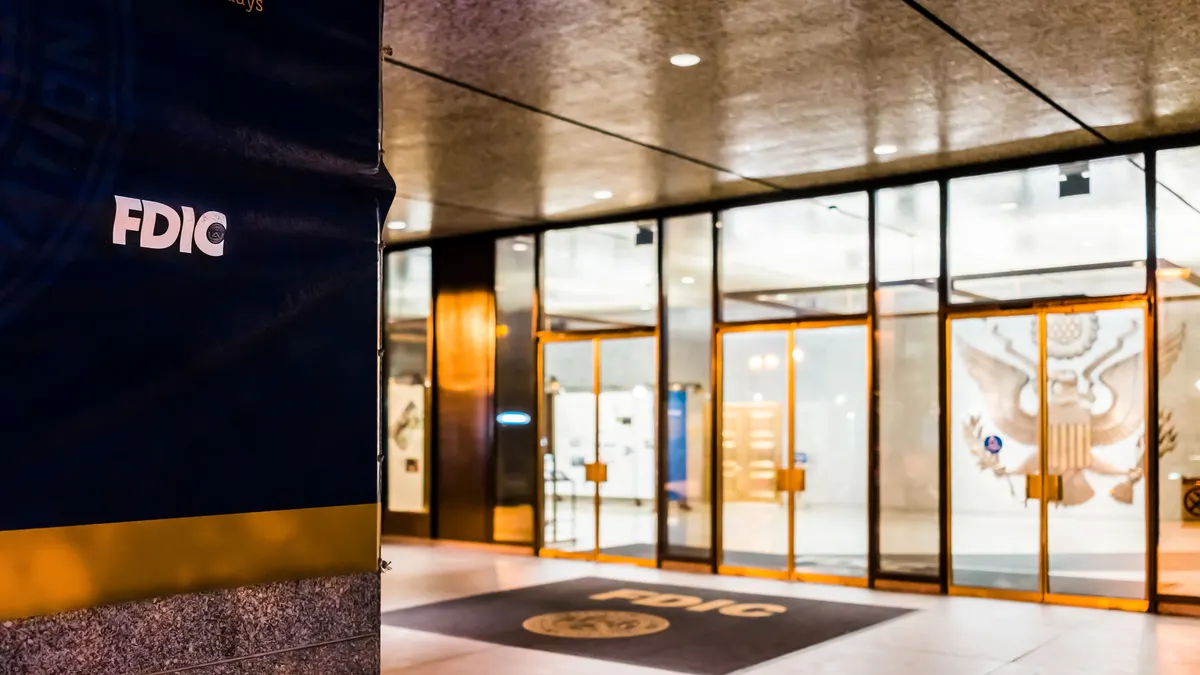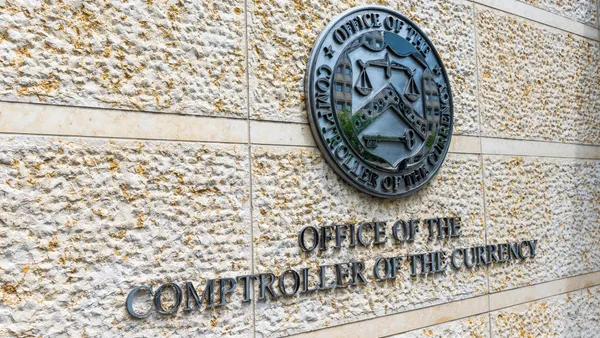Banking-as-a-service, which allows nonbank firms like fintechs to offer banking products through partnerships with chartered banks, has grown into a lucrative and promising new revenue stream for some financial institutions over the years.
But as the model continues to garner intense regulatory scrutiny, BaaS banks in 2024 will need to double down on their investments in the space, or decide to sit on the sidelines, some industry experts say.
“Given the intense regulatory environment, BaaS banks will have to decide, ‘Go big or go home,’” said John Soffronoff, partner and U.S. head of community banking for consulting firm Capco. “The infrastructure necessary to effectively manage third-party risk needs to be leveraged over a sizable portfolio. This is not an area a bank can dabble in.”
Several enforcement actions against BaaS-heavy players over the past several years have shed light on how regulators are looking to step up scrutiny of the space.
Blue Ridge Bank, Cross River Bank and more recently, First Fed Bank, have faced penalties related to their fintech partnerships as regulators are increasingly requiring firms to implement stricter oversight of the tie-ups.
The recent enforcement actions, however, are not expected to stifle BaaS growth in 2024, but rather send a signal that banks need to boost their compliance programs, said James Stevens, a partner in Troutman Pepper’s financial services practice.
“Banking-as-a-service has been increasing rapidly year over year for several years, and I do not see an end in sight,” Stevens said. “Smart BaaS participants are assimilating the guidance and learning from the enforcement activity. These participants are making their programs safer and stronger and that trend will continue. We do not see the enforcement activity chilling the space except with respect to riskier programs like high interest rate loan programs and with fintech operators that do not have strong compliance management systems in place.”
While demand for embedded banking services will continue to propel the BaaS space forward, experts say increased regulatory scrutiny will likely result in separating committed banks from those with a casual interest in the model.
“Just as prior years ushered in a wave of new entrants to the BaaS space, 2024 will be marked by exits as banks adjust to shifting expectations and increased regulatory scrutiny of third-party risk management,” said Patrick Haggerty, a director at regulatory advisory firm Klaros Group.
The first to leave will be lenders that thought the B2B2C nature of the business would rule out the need for significant investments in compliance talent and infrastructure, he said.
“Some banks are learning the hard way that while you can outsource operations, you can't outsource risk management,” Haggerty added.
Meanwhile, interagency guidance, meant to offer clarity on third-party risk, set in motion a divide among BaaS banks, said Brandon Oliver, principal at BankTech Ventures.
“Some banks decided to close in on themselves a little bit more and become more focused on what they do daily,” he said. “Then there are other banks that see a major opportunity and are really trying to dive into it.”
Daniel Haisley, head of innovation at digital banking solutions provider Apiture, said he expects to see consolidation, as the lion’s share of BaaS activity migrates to more compliant and experienced lenders.
“Fintechs will increasingly pool into a smaller number of specialized banks,” he said. “Most financial institutions teetering on the edge of whether to get into BaaS will opt away from it to avoid the regulatory pressure despite the need for new deposit streams.”
Banks with long-established BaaS programs will continue to grow their portfolios, while the majority of late entrants “will back away after testing the waters,” Haisley said.
Some late entrants, he added, will find that they either weren't staffed appropriately for establishing or maintaining a BaaS program or will determine that their business needs have changed, he said.
“I think the BaaS market is going to continue to grow while having more of a regulatory spotlight on it than before — becoming more ‘proceed with caution’ for financial institutions looking to enter the space,” said Chris Tremont, chief digital officer at Grasshopper Bank.













